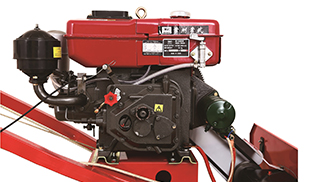दिसम्बर . 03, 2024 17:18 Back to list
How Much Heat Can Brake Drums Reach During Operation
Understanding Brake Drum Temperatures How Hot Do They Get?
When it comes to automotive systems, few components are as vital as the brakes. A critical part of the braking system for many vehicles is the brake drum, which plays a crucial role in slowing down or stopping the vehicle by converting kinetic energy into thermal energy. However, this process can generate substantial heat, leading to questions about how hot brake drums actually get during operation.
The Basics of Brake Drums
Brake drums work in conjunction with brake shoes to create friction. When the driver presses the brake pedal, hydraulic fluid is used to push the brake shoes against the inner surface of the rotating brake drum. This friction generates the necessary force to slow the vehicle. While this system is highly effective, it also generates a significant amount of heat due to the friction involved.
Temperature Ranges
The heat generated by the braking process can reach impressive temperatures. Under normal driving conditions, brake drums can get between 300°F to 500°F (approximately 150°C to 260°C). During more strenuous conditions, such as heavy braking or driving downhill, temperatures can rise significantly higher. In these scenarios, it’s not uncommon for brake drums to exceed 600°F (around 315°C) and, in extreme cases, can approach or even exceed 800°F (approximately 427°C).
Factors Affecting Temperature
Several factors influence how hot brake drums can get
1. Driving Conditions Frequent stop-and-go traffic, heavy loads, and steep descents can increase brake drum temperatures significantly compared to steady highway driving.
2. Brake Design The design and material of the brake drum can also affect heat dissipation. Some drums are designed to be more heat-resistant or may include ventilation features to help dissipate heat more effectively.
3. Brake Pad Material The type of brake pad material used can influence the amount of friction, and consequently, the heat generated. Certain materials produce more friction and can lead to higher temperatures compared to others.
4. Brake Maintenance Poorly maintained brakes, such as those with worn-out pads or improperly adjusted components, can result in increased friction and heat, leading to potential overheating.
Overheating and Its Consequences
When brake drums reach temperatures beyond their designed tolerance, several potential issues can arise
- Brake Fade This phenomenon occurs when the brake components become too hot, leading to a reduction in braking efficiency. This can be extremely dangerous, especially in emergency situations.
how hot do brake drums get

- Warping Excessively high temperatures can cause the brake drum to warp, leading to uneven braking and potential brake failure. A warped drum will not make consistent contact with the brake shoes, resulting in decreased performance.
- Cracking Extreme thermal stress can also lead to cracks in the brake drum, necessitating immediate replacement to ensure safe driving
.Signs of Overheating
Drivers should be aware of the signs that their brake drums may be overheating
- Burning Smell A distinct burning odor, often compared to burnt rubber, can indicate that the brakes are overheating.
- Vibration If there is noticeable vibration or pulsation when braking, it may indicate warped brake drums or other issues.
- Reduced Braking Power A sudden decrease in braking responsiveness is a clear sign that something is wrong, possibly due to overheating.
Preventative Measures
To avoid the problems associated with overheating brake drums, consider the following
- Regular Maintenance Regular inspections and maintenance of the braking system will help ensure that all components are functioning as intended.
- Modulating Brake Use Learning to modulate brake use, especially when descending steep roads, can help prevent excessive heat buildup.
- Upgrading Components For those who frequently drive under conditions that lead to high brake temperatures, upgrading to high-performance brake components can provide better heat resistance and improved performance.
Conclusion
Brake drums play a pivotal role in vehicle safety, and their operation is accompanied by significant heat generation. Understanding how hot brake drums can get, the factors that influence their temperature, and recognizing the signs of overheating equips drivers with the knowledge to maintain their braking system effectively. Prioritizing regular maintenance and being mindful of driving conditions can help ensure that your brakes function safely and effectively, maintaining the integrity of the vehicle and the safety of its occupants.
-
HINO Industrial Solutions - ¡Ң���ຽ��е��������˾ | Advanced Efficiency&Customization
NewsJul.13,2025
-
HINO Industrial Efficiency Solutions - ¡Ң���ຽ��е��������˾
NewsJul.13,2025
-
HINO Industrial Solutions - ¡Ң���ຽ��е��������˾ | Advanced Technology&Reliability
NewsJul.13,2025
-
HINO Industrial Efficiency-Jiangsu Hino Industrial|Productivity Optimization&Cost Reduction
NewsJul.12,2025
-
HINO-¡Ң���ຽ��е��������˾|Advanced Industrial Solutions&Energy Efficiency
NewsJul.12,2025
-
Premium Brake Drum Iveco – Durable Drum Brake Drum & Brake Shoe Solutions
NewsJul.08,2025
